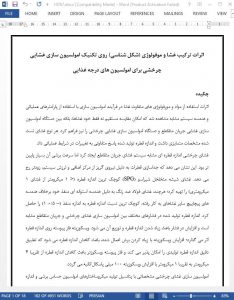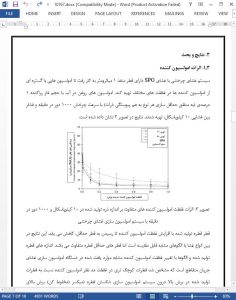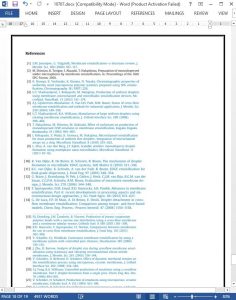Abstract
The effects of using different membrane materials and morphologies in the membrane emulsification process were observed using similar operating parameters and system geometry, allowing a direct comparison of not only the membranes themselves but also between both a stationary cross-flow membrane emulsification device and a rotated membrane emulsification device. Each membrane type tested had distinct characteristics, and the droplet sizes produced responded differently to changes in operating conditions.
The rotating membrane produced similar droplet sizes to the cross flow membrane system, but at a much lower shear rate. This suggests that the detachment of the droplets occurs sooner due to the additional centrifugal force and system vibration. The Shirasu porous glass (SPG) membrane produced the smallest droplet sizes (<1 µm from a 1 µm membrane), however the stainless steel membrane produced the lowest droplet size to pore size ratio (~0.5:1) due to its cylindrical pore geometry as opposed to the tortuous geometries of the other membranes used. The droplet sizes produced at different pressures are similar between rotated and cross-flow membrane emulsification, with increases in pressure increasing droplet size and size distribution. The viscosity of the continuous phase has an effect on the droplet size; increasing the viscosity decreases the droplet size by increasing the applied shear, allowing fine tailoring of the size produced, with a more viscous continuous phase reducing the droplet size from ~4 µm to ~1 µm with an increase in viscosity of 100 mPa s.
Rotating membrane emulsification has properties with potential to produce shear sensitive emulsion microstructures with small droplet sizes. Emulsion microstructures such as duplex emulsions, core/shell structures beads etc. can be used in the production of novel food structures.
1. Introduction
The manufacture of emulsions is an important part of many processes across many industry sectors; however, the emulsification process often still relies on traditional droplet break-up systems during which droplets are produced by repeatedly breaking large droplets into smaller ones until the desired size range is reached [1]. The last few decades have brought many advances in producing droplets with very tightly controlled size distribution spans, which find uses in high value products such as spacers for liquid crystal displays [2] and packing beads for chromatography columns [3]. These droplets are produced by more careful emulsification techniques, producing the droplets at the size that is required rather than breaking them up from pre-existing larger droplets [4,5]. One such technique is that of membrane emulsification, and this has been explored with the aim of producing near mono-disperse droplets [6,7].
4. Conclusions
Rotating membrane emulsification compares favourably in many respects to cross-flow membrane emulsification. It produces similar droplet mean diameters at much lower shear rates than the comparable cross-flow system, although at the expense of having larger droplet size distribution spans. This makes it suitable for possible applications in the food industry, where mono-disperse droplet size is less important than production rate and minimising the exposure of sensitive structures to shear (for example in flavour masking of neutraceuticals) is more relevant











